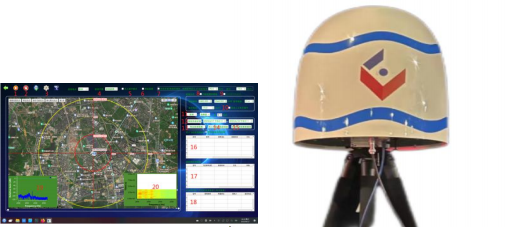Enhancing Airspace Security with the GX103C
In today's rapidly evolving security landscape, the proliferation of unmanned aerial vehicles (UAVs), or drones, presents significant challenges to sensitive areas and critical infrastructure. The GX103C Drone Detection and Countermeasure Integrated System offers a comprehensive solution for identifying, tracking, and neutralizing unauthorized drone activity. Designed as an all-in-one unit, the GX103C seamlessly integrates advanced detection capabilities with effective countermeasure technologies to provide robust airspace protection.
Utilizing sophisticated "radio detection" techniques and synergistic spectrum sensing, the system passively listens for the unique characteristic signals emitted by "drones". Through advanced data processing and "machine learning" algorithms, it accurately identifies the detected UAV and determines its direction, providing vital situational awareness. When an unauthorized "drone" is identified, the GX103C employs targeted "radio jamming" and blocking technology to disrupt its communication links, effectively neutralizing the threat and allowing for safe management or capture.

Frequently Asked Questions
Q: What types of "drones" can the GX103C detect?
A: The GX103C utilizes "radio detection" across a wide frequency spectrum (50MHz-6GHz), allowing it to detect signals from a broad range of commercially available and custom-built "drones" that rely on radio communication for control, navigation (like GPS), or video transmission.
Q: How does the "jamming" countermeasure work?
A: Once an unauthorized "drone" is identified, the GX103C emits targeted radio signals within specific frequency bands known to be used by "drones" for communication. This "jamming" effectively blocks the signals between the "drone" and its operator, disrupting control and navigation, and typically forcing the "drone" to land or return to its starting point.
Q: Is the GX103C suitable for use in all weather conditions?
A: The GX103C is designed with a wide operating temperature range of -20℃ to 60℃, making it suitable for deployment in various climates. Its robust construction is intended for outdoor use, although performance range can be affected by environmental factors like heavy rain, fog, or physical obstructions.
